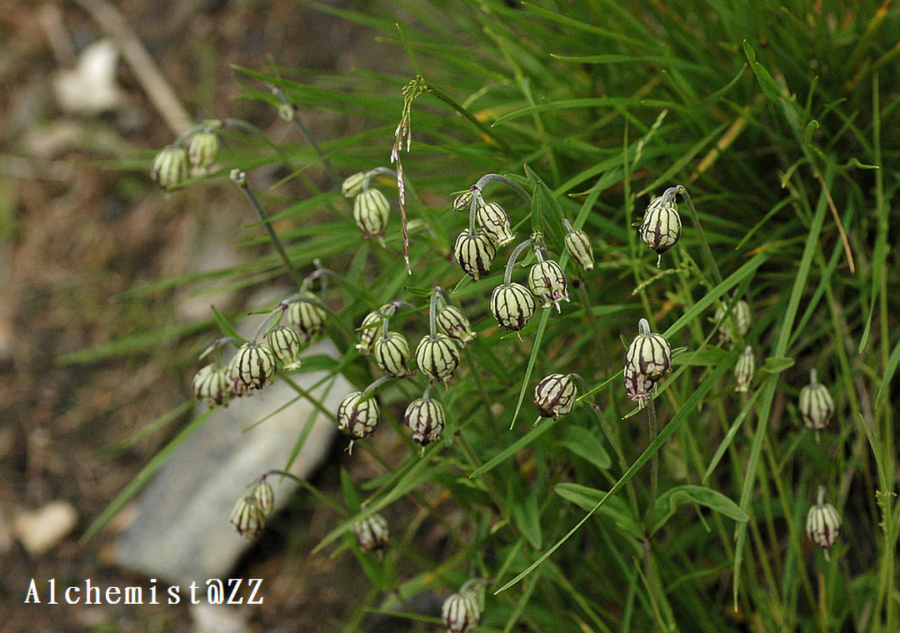- Scientific Name: Silene himalayensis (Rohrb.) Majumdar
- Ref: J. Indian Bot. Soc. 42:648. 1964
- English Common Name: Himalayas catchfly
- Chinese Common Name: 须弥蝇子草 xūmí yíngzǐcǎo, 喜马拉雅蝇子草 Xǐmǎlāyǎ yíngzǐcǎo
- Family: Caryophyllaceae
- Genus: Silene
- Distribution: Scrub, alpine meadows; 2000–5000 m. Hebei, Hubei, Shaanxi, Sichuan, Xizang, Yunnan [Afghanistan, Bhutan, Nepal, Pakistan, Sikkim].
- Photo: 07/14/2009, Mt. Taibai, Qinling
Herbs perennial, 20--80 cm tall. Roots robust. Stems sparsely clustered or solitary, erect, slender, simple, pubescent, apically sparsely glandular hairy. Basal leaves narrowly oblanceolate, 4--10 cm × 4--10 mm, both surfaces pubescent to subglabrous, margin ciliate, base attenuate into petiole, apex acuminate, rarely acute; cauline leaves 3--6 pairs, oblanceolate or linear-lanceolate, base cuneate or attenuate. Flowers 3--7, slightly nutant. Pedicel 1--5 cm, slender, densely pubescent, sparsely glandular hairy; bracts linear-lanceolate, herbaceous, hairy. Calyx ovoid-campanulate, 1--1.2 cm, closed in fruit, densely pubescent, glandular hairy, veins violet, anastomosing and broadly confluent above; calyx teeth triangular, margin membranous, ciliate, apex obtuse. Androgynophore ca. 1 mm. Petals not or slightly exserted beyond calyx, dark red, ca. 1 cm; claws cuneate, glabrous, auricles not obvious; limbs shallowly bifid at apex; coronal scales small. Stamens included; filaments glabrous. Styles included. Capsule ovoid, 8--10 mm, shorter than calyx, 10-toothed. Seeds brown, orbicular, flat, ca. 1.5 mm in diam. including wing. Fl. Jun--Jul, fr. Jun--Aug. (Flora of China)
